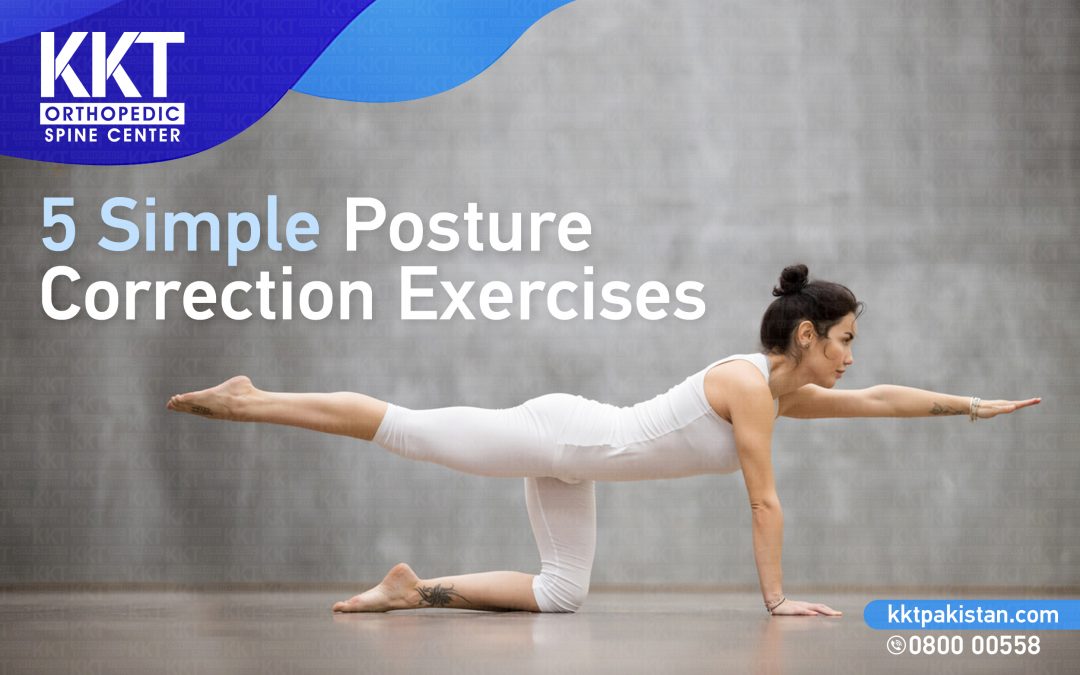“Sit up straight”, and “Fix your posture” aren’t just annoying things told to us by our teachers and parents. There are several bad posture side effects or causes, for instance., pain in the neck or back, spinal curvature, headaches, etc. Poor posture also involves slouching or looking over the handheld devices for excessive periods of time. A sedentary lifestyle or being physically inactive might also be one of the culprits behind poor posture. Posture correction exercises play a significant role in improving posture. A proper posture is way more than just appearance it plays a vital role in improving strength, flexibility, and balance. Moreover, it also reduces excessive stress on ligaments and muscles.
Poor Posture Symptoms:
Some of the bad posture symptoms include the following:
- Rounded shoulders
- Headache
- Pain in the neck, shoulder, and back
- Muscle fatigue
- Forward head carriage
Benefits of proper posture:
The benefits of proper or correct posture are as follows:
- Increased/boosted confidence
- Better mood
- Increased self-esteem
- Decreased risk of injury
- Reduced back & neck pain
- Lesser headaches
- Decreased tension in neck & shoulders
Posture Correction Exercises:
Posture correction exercises have several benefits including balance, muscle strength, etc. Following are some of the exercises to improve posture:
1. Bridges:
To perform a bridge exercise, follow the steps mentioned below:
- Lie straight on your back on the floor with your knees bent and feet flat.
- By engaging your core and buttock muscles, lift your hips (therefore raising your lower back and buttocks off the floor).
- Hold it for some seconds and take three deep breaths.
- Gently come back to the initial position and repeat the same steps.
This exercise helps strengthen abdominal and gluteal muscles hence relieving the stress on the lower back.
2. Child Pose:
To perform the child pose, follow the steps mentioned below:
- Sit on your shinbones on the floor with your knees together; big toe touching, and heels extended apart towards each side.
- Bend forward towards your hips and extend by walking through your hands on the floor.
- Sink your hips towards your feet (place a pillow underneath your thighs if they can’t go down).
- Place your forehead on the floor gently or turn your head to either side.
- Either rest your arms along the body or keep them extended.
- Breath into the back of the rib cage and waist
- Relax remaining in this pose for about 30 seconds and come back to the initial position gently.
3. Kneeling Hip Flexor:
To perform kneeling hip flexor, follow the steps mentioned below:
- Initially put both of your knees on a soft surface.
- Then bring your one foot forward placing it flat on the floor – note to make sure that the knee is positioned with the ankle.
- Extend your arms towards the knee (providing support if needed).
- Straight up and gently lean forward into the stretch.
- You can feel the stretch in the rear leg (top of your thigh) and groin.
- Slowly come back to the initial position.
- Repeat the stretch about 10 times on both legs.
4. Plank:
To perform a plank, follow the steps mentioned below:
- Start by lying on your stomach and putting your forearms against the floor.
- Lift your body off the floor engaging your core and balancing on your forearms and toes.
- Make sure to keep your spine in a neutral position (i.e., no sagging lower back or butt lifted high up).
- Hold this posture for about 20-30 seconds and then gently come back down to the floor.
- Repeat this exercise about 2 to 5 times.
5. Upper Trapezius Stretch:
To perform this stretch, follow the steps mentioned below:
- Choose either between performing this stretch while standing or sitting.
- Once done, place your right hand on the opposite side of your head, and place your left hand behind your back.
- Now start by gently tilting bringing your head towards your right shoulder. Put slight pressure for a deeper stretch but not too much.
- Hold this stretch for about 15-30 seconds and repeat with the left hand.
This stretch mainly stretches the neck and upper back muscles and is also helpful for people with forward neck syndrome.
Seeking Medical Attention:
In case of back, neck, or shoulder pain get in touch with KKT Orthopedic Spine Center, Pakistan. We provide revolutionary non-surgical treatment for various spinal ailments along with highly qualified orthopedic consultants. For booking an appointment click on the link below:

